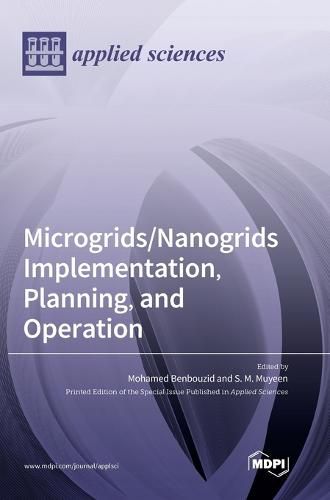Readings Newsletter
Become a Readings Member to make your shopping experience even easier.
Sign in or sign up for free!
You’re not far away from qualifying for FREE standard shipping within Australia
You’ve qualified for FREE standard shipping within Australia
The cart is loading…






This title is printed to order. This book may have been self-published. If so, we cannot guarantee the quality of the content. In the main most books will have gone through the editing process however some may not. We therefore suggest that you be aware of this before ordering this book. If in doubt check either the author or publisher’s details as we are unable to accept any returns unless they are faulty. Please contact us if you have any questions.
Today's power system is facing the challenges of increasing global demand for electricity, high-reliability requirements, the need for clean energy and environmental protection, and planning restrictions. To move towards a green and smart electric power system, centralized generation facilities are being transformed into smaller and more distributed ones. As a result, the microgrid concept is emerging, where a microgrid can operate as a single controllable system and can be viewed as a group of distributed energy loads and resources, which can include many renewable energy sources and energy storage systems. The energy management of a large number of distributed energy resources is required for the reliable operation of the microgrid. Microgrids and nanogrids can allow for better integration of distributed energy storage capacity and renewable energy sources into the power grid, therefore increasing its efficiency and resilience to natural and technical disruptive events. Microgrid networking with optimal energy management will lead to a sort of smart grid with numerous benefits such as reduced cost and enhanced reliability and resiliency. They include small-scale renewable energy harvesters and fixed energy storage units typically installed in commercial and residential buildings. In this challenging context, the objective of this book is to address and disseminate state-of-the-art research and development results on the implementation, planning, and operation of microgrids/nanogrids, where energy management is one of the core issues.
$9.00 standard shipping within Australia
FREE standard shipping within Australia for orders over $100.00
Express & International shipping calculated at checkout
This title is printed to order. This book may have been self-published. If so, we cannot guarantee the quality of the content. In the main most books will have gone through the editing process however some may not. We therefore suggest that you be aware of this before ordering this book. If in doubt check either the author or publisher’s details as we are unable to accept any returns unless they are faulty. Please contact us if you have any questions.
Today's power system is facing the challenges of increasing global demand for electricity, high-reliability requirements, the need for clean energy and environmental protection, and planning restrictions. To move towards a green and smart electric power system, centralized generation facilities are being transformed into smaller and more distributed ones. As a result, the microgrid concept is emerging, where a microgrid can operate as a single controllable system and can be viewed as a group of distributed energy loads and resources, which can include many renewable energy sources and energy storage systems. The energy management of a large number of distributed energy resources is required for the reliable operation of the microgrid. Microgrids and nanogrids can allow for better integration of distributed energy storage capacity and renewable energy sources into the power grid, therefore increasing its efficiency and resilience to natural and technical disruptive events. Microgrid networking with optimal energy management will lead to a sort of smart grid with numerous benefits such as reduced cost and enhanced reliability and resiliency. They include small-scale renewable energy harvesters and fixed energy storage units typically installed in commercial and residential buildings. In this challenging context, the objective of this book is to address and disseminate state-of-the-art research and development results on the implementation, planning, and operation of microgrids/nanogrids, where energy management is one of the core issues.